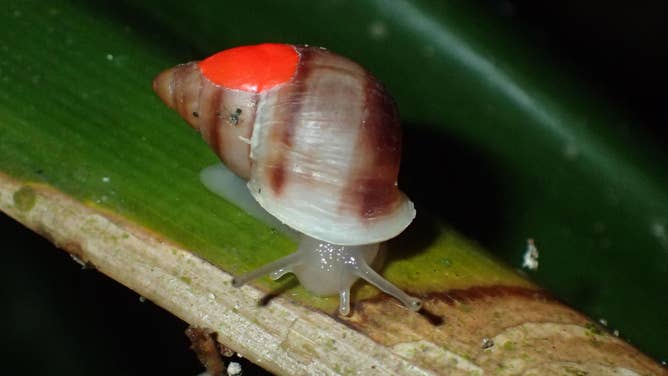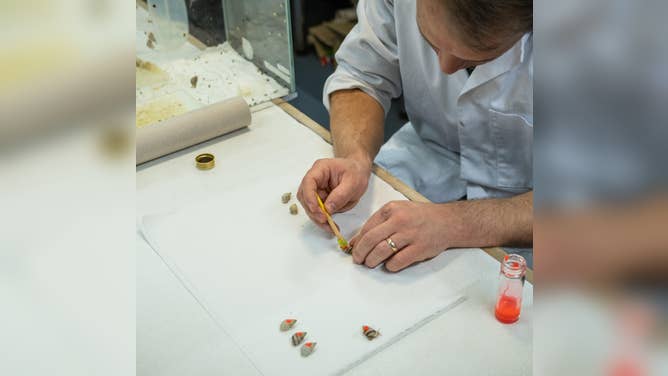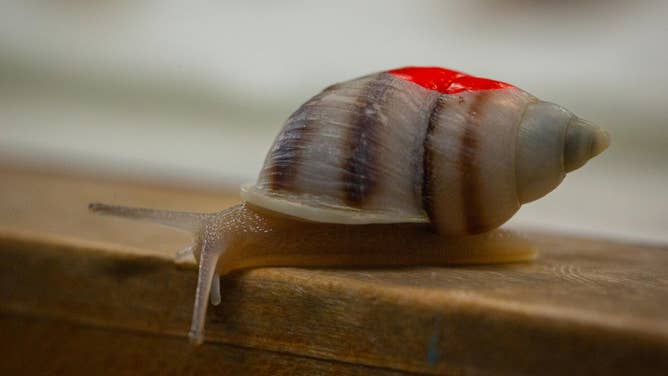'Extinct' tropical snails reintroduced to Tahiti, Moorea in French Polynesia
The Partula snails, also known as Polynesian tree snails, helped maintain the health of the island forests by eating decaying plant tissue and fungi but were wiped out nearly 30 years ago.
Giant African land snail invades Florida, poses health risk
Science Director & Curator of the Bailey-Matthews National Shell Museum Jose Leal says the snail carries a parasite that can cause meningitis and humans should avoid touching the mollusk.
PAPEETE, French Polynesia – More than 5,000 extinct-in-the-wild and critically endangered tropical snails were recently reintroduced to their French Polynesian homes of Tahiti and Moorea.
The nocturnal Partula snails, also known as Polynesian tree snails, had helped maintain the health of the island forests by eating decaying plant tissue and fungi but were wiped out nearly 30 years ago.

A Partula snail.
(Zoological Society of London / FOX Weather)
At the time, the predatory rosy wolf snail was introduced to the islands to combat an invasive snail species. However, according to the Zoological Society of London, the rosy wolf snail themselves became invasive and attacked the native Partula snails instead.
SOGGY DAYS ARE WONDERLAND FOR SLUGS, SNAILS
Due to efforts by conservationists, the story of the Partula snails did not end there. The last surviving snails were whisked away thousands of miles in the early 1990s by London and Edinburgh zoos as part of a breeding initiative to repopulate the islands.

Partula snails prepare to leave London Zoo.
(Zoological Society of London / FOX Weather)
The reintroduction began nine years ago. With this latest batch of more than 5,000 snails bred at the conservation zoos, the number of Patula snails brought back to French Polynesia has risen to more than 21,000.
ZSL said this year’s batch of snails was the largest reintroduction so far. They noted that this year’s conservation efforts saw eight species and subspecies reintroduced, classified as Extinct-in-the-wild, Critically Endangered or Vulnerable.
Before their arrival, the 1 to 2-cm-long snails were individually marked with a dot of red UV reflective paint. The dots will glow under ultraviolet light, allowing conservationists to monitor the nocturnal snails at night.

Partula snail with a dot of red UV reflective paint on its shell.
(Zoological Society of London / FOX Weather)
"This collaborative conservation initiative is, without a doubt, helping to bring these species back from the brink of extinction and shows the conservation power of zoos to reverse biodiversity loss," said Paul Pearce-Kelly, curator of invertebrates at ZSL.
He added, "With nature across the world increasingly under threat, these little snails represent hope for the world’s wildlife."
